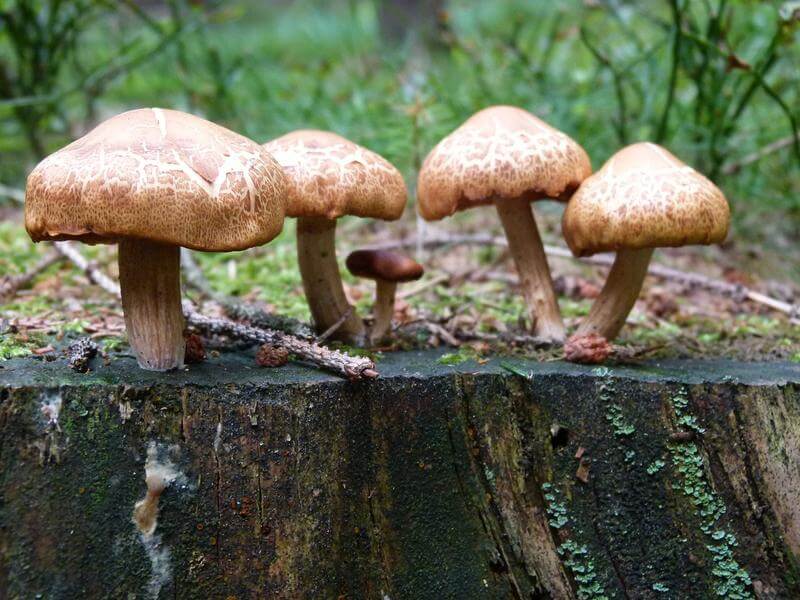Mushrooms
by Steven Rinella
Broadcast 5.12 & 5.12.2020

Public domain image.
Listen:
Throughout the human history of traipsing the earth in search of edibles, mushrooms have undoubtedly been the least understood and most feared flora in the forests of the world. Early Greeks and Romans thought most mushrooms were sinister, evil things. They associated them with dark, damp areas of decay and often depicted mushrooms in the company of snakes or toads, two key ingredients in witches’ cauldrons.
This fear and disdain of the mushroom was no doubt powered by its ability to seemingly pop up overnight in almost any environment and without noticeable roots, just a wandering, crooked stem and cap of oftentimes wild, perverse color and shape.
While the portion of a mushroom projecting up from the soil or growing off a tree appears to be a little plant, it is really only the fruit, much like an apple or huckleberry, put forth by the hidden, tree-like body of the mushroom, called the mycelium. The exposed portion has the sole function of spore, or seed, dispersal. The stem that supports the cap of the mushroom thrusts the fruiting body up through soil and grasses where it can release its reproductive cargo.
As important as what the mushroom does is what it doesn’t do. Mushrooms do not conduct photosynthesis, because they have no chlorophyll, the substance that makes other plants green. Without chlorophyll, fungi are unable to manufacture their own organic foods, such as starches and carbohydrates, like green plants do. Hence, they must live off other organisms, either as saprophytes, living off the dead, or as parasites, which draw nutrients from living things.
Just as most animals have specialized diets, needing specific amounts of nutrients from certain sources, each mushroom species is limited to the offerings of only certain types of organisms. For example, crown-tipped coral, an edible saprophyte, appears in the late summer and early fall here in Montana and grows only on the dead logs of aspen and willow trees.
Just as mushrooms benefit from other organisms, others benefit from them, too. Some trees and plants, such as orchids and Indian pipe, need fungi mycelium growing around their roots in order for them to gather water and essential nutrients. In turn, the fungus is dependent on the organisms it helps. These forms of relationships, with organisms benefiting exclusively or mutually, are called symbiotic.
Understanding symbiosis and the parasitic or saprophytic nature of the different mushroom species can be a tremendous aid in locating and identifying them. Knowing that a certain species such as an elm oyster can only live on the nutrients provided by elm trees puts the mushroom hunter at a great advantage in finding the species.
While current knowledge of the underground workings of mushrooms makes them far less mysterious than once thought, there is real truth in what the Romans believed: mushrooms can be deadly. At least that is a safe assumption in a culinary sense. The principle of innocent until proven guilty in the courtroom should be discarded as far as it applies mushrooms in the kitchen. Suspect them all. First-time mushroom hunters should check their collections against multiple field guides and show potential edibles to a local expert before sampling them.
Every week since 1991, Field Notes has inquired about Montana’s natural history. Field Notes are written by naturalists, students, and listeners about the puzzle-tree bark, eagle talons, woolly aphids, and giant puffballs of Western, Central and Southwestern Montana and aired weekly on Montana Public Radio.
Click here to read and listen to more Field Notes. Field Notes is available as a podcast! Subscribe on iTunes, Google Play, or wherever you listen to podcasts.
Interested in writing a Field Note? Contact Allison De Jong, Field Notes editor, at adejong [at] montananaturalist [dot] org or 406.327.0405.
Want to learn more about our programs as well as fun natural history facts and seasonal phenology? Sign up for our e-newsletter! You can also become a member and get discounts on our programs as well as free reciprocal admission to 300+ science centers in North America!












